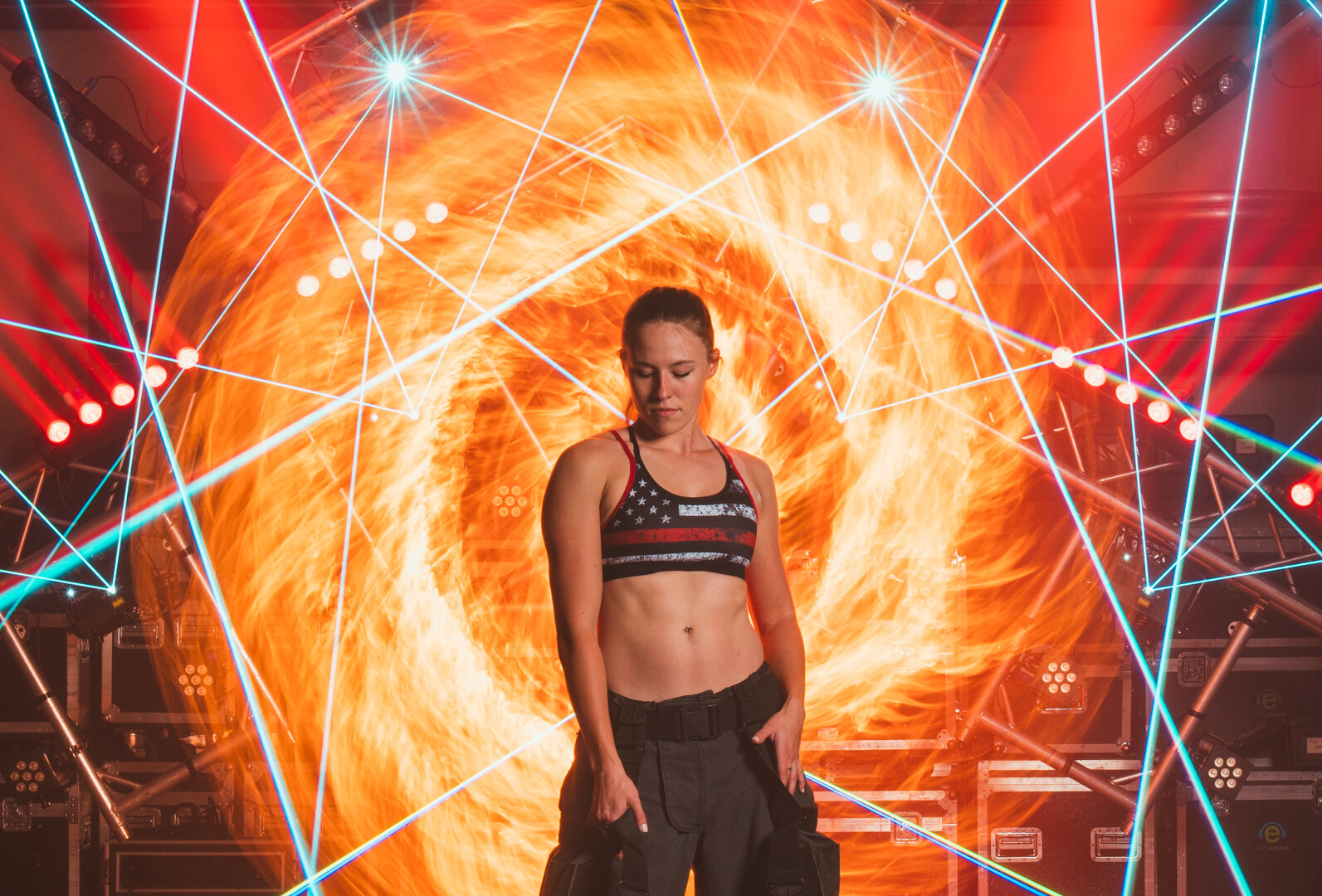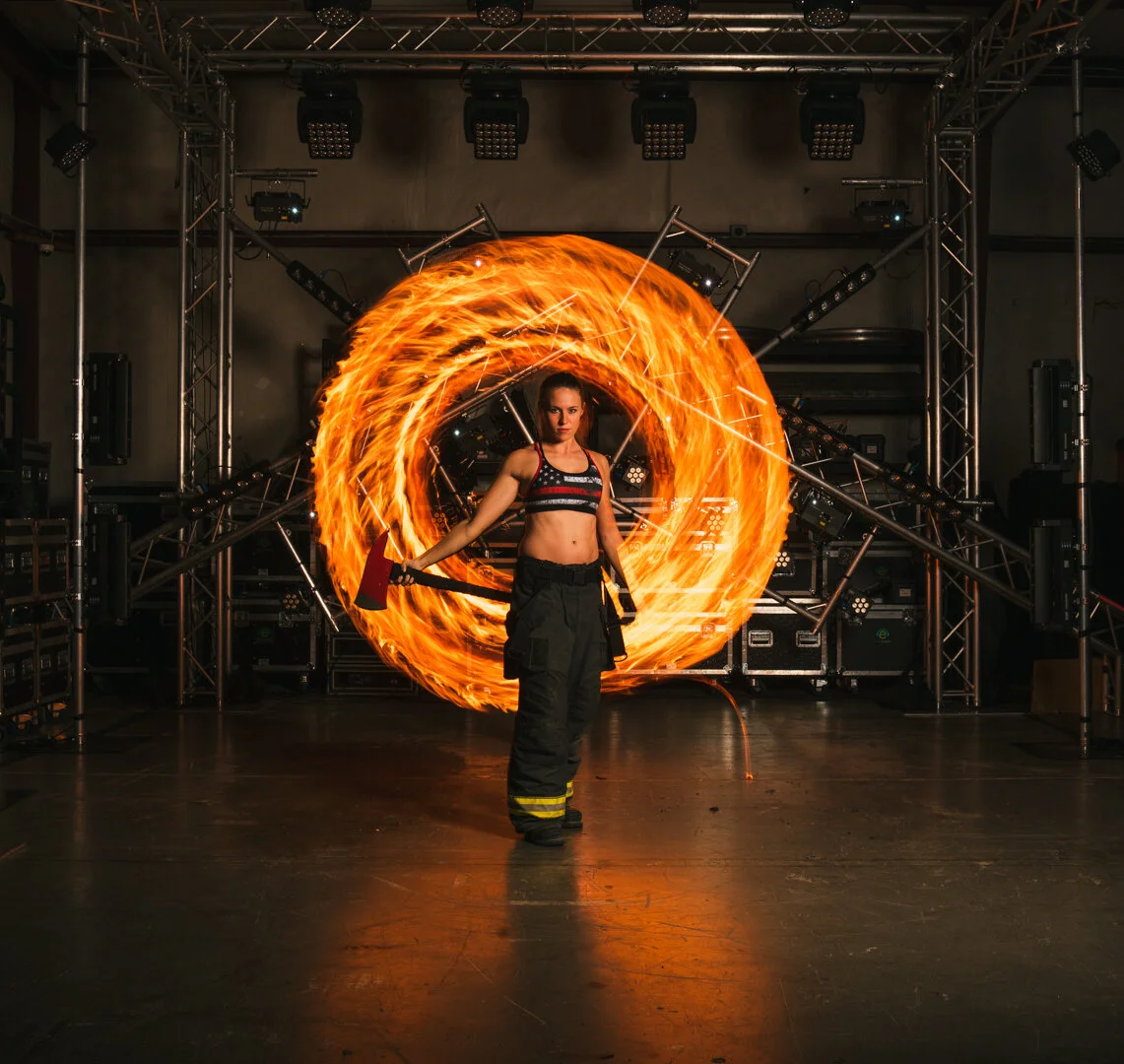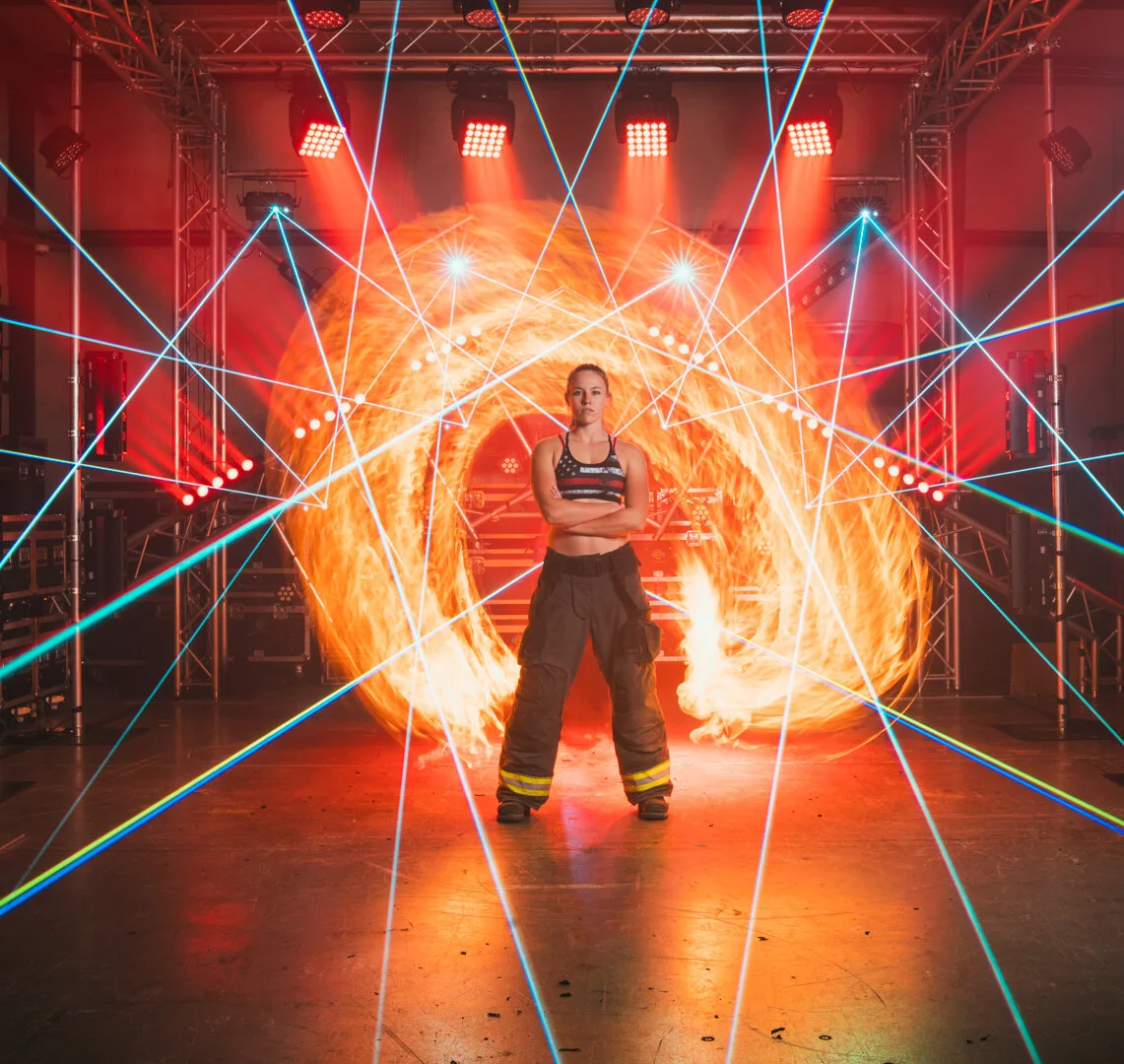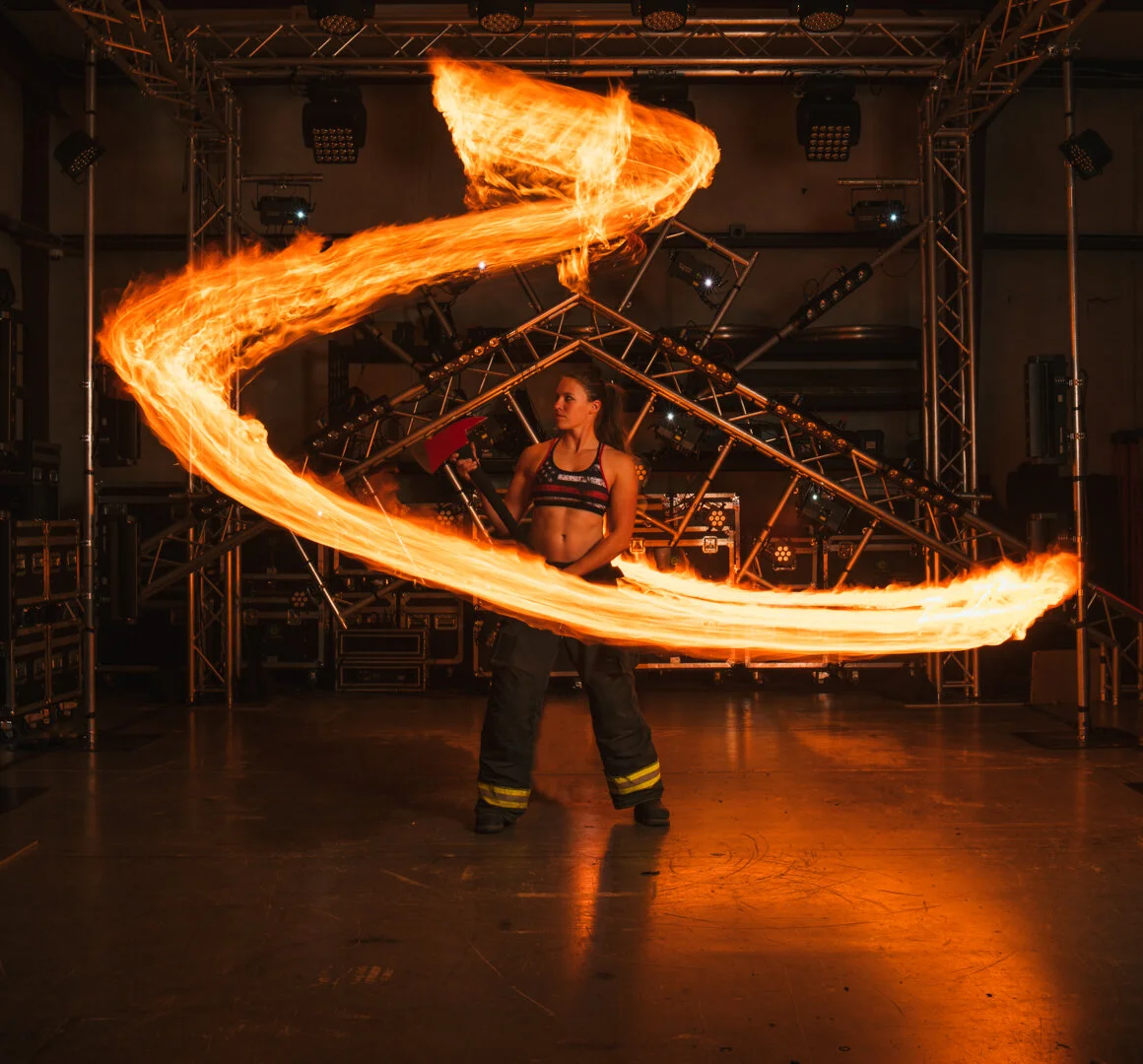Russell & Heather: Fire Light Painting
We’ve worked with Colorado Springs based light painter Russell Klimas too many times to count. It’s gotten to a point that we consider him an “Artist in Residence” at the Lighting Lab; a high honor for sure. Every time we think we’ve seen everything he has to offer, he approaches us with another technique he wants to try in the Lighting Lab. This time it was light painting with fire. Klimas, being the veteran light painter he is, has done previous work with fire in other settings. Enthralled by the idea, we immediately wanted to participate. Because we would be dealing with actual fire, Klimas wanted to take all of the necessary precautions to ensure the Lighting Lab was used in a safe manner. This included bringing in a model who has experience with fire and probably more than many of us would want to have. When dealing with fire, it’s always good to have a firefighter on scene.
Enter Heather Heath, a local firefighter and EMT for the past 3 years. Heath is the youngest firefighter at her department, as well as the only full time female employed. Her passion for medicine and helping people help drive her career in emergency services. “I love the tight knit feel of being a part of my firefighter family and constantly training and working together as a team.”
In addition to her career in emergency services, Heath has also been a signed model for 5 years, through which she met Klimas. “Russell is so outgoing and charismatic at shoots, I love how fun he is. He is not afraid to dance to the music, make jokes, or talk in an accent on camera. He is a blast to work with and an even better friend.”
To give you a small taste of the process to create such stunning imagery, we spoke with Russell and asked for some tidbits in regards to using fire successfully in a light painting scenario. Before dropping some of his wisdom in this post below, our disclaimer would be to work with or hire a professional if you truly want to create images such as the ones produced by Klimas.
The main materials needed to paint with fire are wooden dowel rods with a cotton t-shirt stapled to it. Important details with this set-up include not stapling the t-shirt further than half way down the dowel rod. You need to keep yourself safe from being burnt.
In terms of safety, a fire extinguisher and/or a fire blanket should be on-site and close by. Also, the model should not be wearing any synthetic materials. If at all possible, their clothing should be 100% cotton.
When prepping the “fire stick,” use lighter fluid but be sure to apply the fluid far away from your image location. Since we were in an indoor environment, the dowel rods were prepped outside of the building and far away from the actual structure.
When lighting the cotton shirt, be sure to start at the bottom of the material (or the area closest to where you are holding it). Since fire travels vertically, this will allow the natural progression of the flame to occur.
To extinguish the wooden dowel, pre-prep PVC pipes with removable end caps on them. Have one end on and the other off. Immediately following the long exposure photograph you are working on, place the wooden dowel in the PVC pipe and cap the open end. This will stop oxygen from getting to the fire which safely extinguishes the flame.
As we note above, these are just some basic bullet points on how Russell was safely able to create these images. Klimas is an absolute professional and we cannot stress enough that if you are interested in creating images like what you see within this blog, contact him though the Light & Lense website. Russell is an amazing teacher and always willing to help other photographers become better in the light painting industry.
In conclusion, the night in the Lighting Lab was a staggering success. Even the simplest of designs were jaw dropping to see materialize in camera. It is clear this was not Klimas’s first endeavor with fire light painting. Beyond simple circles, he continued to show his skills with other designs such as the “fire dragon,” as well as quickly blocking and unblocking the camera lens during the long exposure to create a strobed fire effect. Klimas’s handiwork alone is something to be reckoned with, but accompanied by X-Laser HPX Skywriters, the images take on a whole new feel. The lasers cut through the flames, combining primitive and futuristic sources of light. The images truly speak for themselves and we’re happy to share them with our fans.
• Follow and support Heather through her Instagram account: @heather_heath97. •
































